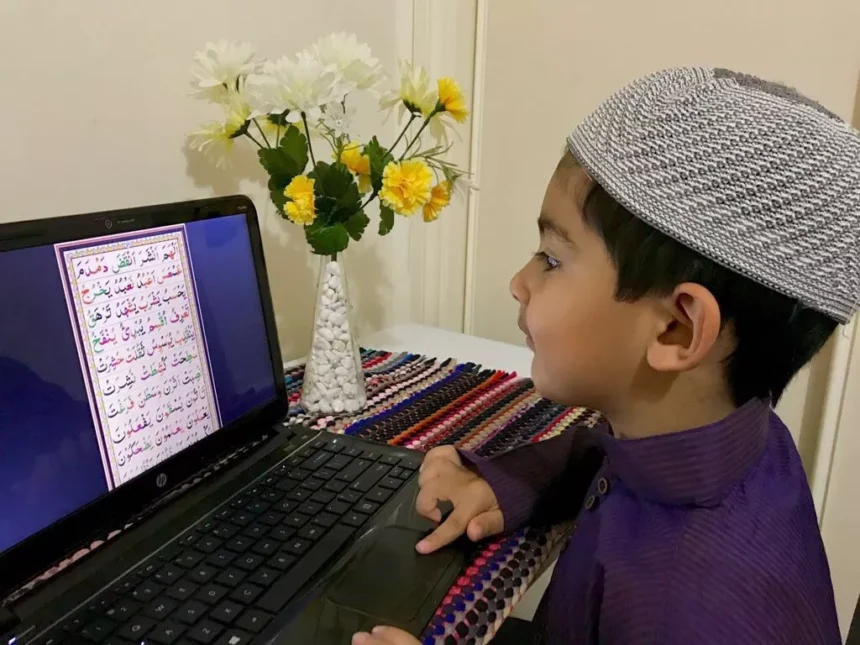Homeschooling continues to grow in popularity, especially among Muslim families seeking more personalized and faith-aligned education. One of the most sought-after subjects in Arabic homeschool programs is the Arabic language, because it’s a key to understanding the Qur’an and Islamic heritage.
The good news? You don’t need to spend a fortune to provide your child with a quality education in Arabic. With dozens of free online Arabic courses available today, parents have more options than ever. But how do you know if a course is actually effective, or just another flashy but empty program?
In this post, we will explore 7 clear signs that a free online Arabic course is a perfect fit for your homeschooler, so you can choose with confidence and clarity.
1. The course aligns with your educational goals
Every homeschool is unique; some parents prioritize conversational fluency, others focus on Quranic comprehension, while some prefer a mix of both. That’s why the first sign of a great free online Arabic course is how well it aligns with your specific educational goals.
Before committing to any course, ask yourself:
- Do you want your child to learn Modern Standard Arabic (MSA) for everyday communication?
- Are you looking for a Quran-focused Arabic course that emphasizes grammar and vocabulary found in Islamic texts?
- Or are you seeking a balance? Basic conversation with an Islamic foundation?
A quality course will clearly outline its focus—whether it’s built for secular language learners, young Muslim students, or those preparing to read and understand the Qur’an. This clarity ensures your homeschool efforts are focused and consistent, and that your child is learning Arabic in a way that’s meaningful and applicable to their broader education.
2. The platform offers structured progression
One of the biggest challenges with free resources is inconsistency. A high-quality free online Arabic course should offer a clear, step-by-step progression, not just a random collection of lessons.
Look for a platform that organizes content by levels (e.g., beginner, intermediate, advanced), with each lesson building logically on the previous one. A good structure might include:
- Thematic units (e.g., greetings, family, prayer-related vocabulary)
- Weekly learning goals or milestones
- Integrated reviews and quizzes to reinforce knowledge
This kind of structured design helps students absorb material more effectively and stay motivated. It also makes your job as a homeschooling parent much easier. You can map out the learning plan in advance and measure your child’s progress confidently.
Bonus if the course includes a learning dashboard or progress tracker, allowing your child to see how far they’ve come, which boosts accountability and excitement.
Avoid courses that dump dozens of disconnected videos or worksheets without guidance on how to use them. Even if they’re free, they waste your child’s learning time without delivering results.
3. It includes interactive and visual learning tools
Children, especially younger homeschoolers, can learn when they are engaged through multiple senses. A strong free online Arabic course is best when it brings language to life through interactive and visual tools rather than just presenting vocabulary and grammar rules.
Look for platforms that incorporate
- Animated videos and colourful illustrations to explain concepts visually
- Drag-and-drop exercises, matching games, or quizzes to test comprehension
- Audio support with native pronunciation to develop listening and speaking skills
- Interactive flashcards or storytelling games for vocabulary retention
These tools are especially effective for kids who are visual learners. Instead of passively watching or reading, your child becomes active in the learning process, leading to better understanding and longer-term retention.
Some free Arabic courses even gamify the experience with badges, stars, or progress bars, which can keep children motivated and coming back for more.
4. The course has an Islamic cultural context
For many homeschooling families, especially those raising Muslim children, learning Arabic it’s more about connecting to the Qur’an, Islamic history, and everyday religious practice. That’s why an ideal free online Arabic course for homeschoolers should include an Islamic cultural context.
This doesn’t mean the course has to be religious in tone, but it should recognize the unique needs of Muslim learners by including:
- Islamic vocabulary (e.g., phrases used in prayer, greetings like As-Salamu Alaikum, or words frequently found in the Qur’an)
- Examples drawn from daily Islamic life, such as learning the days of the week through prayer schedules or learning numbers via Qur’anic verses
- Short lessons that touch on Qur’anic Arabic, even at a beginner level, to build familiarity early on
Courses with this context help children see the spiritual value of learning Arabic. It also supports cross-subject integration—tying language learning into Islamic studies, history, or character development.
5. The course is parent-friendly
In a homeschooling environment, the ease with which parents can manage and support their child’s learning is just as important as the quality of the course itself. An effective free online Arabic course should be parent-friendly, offering tools and features that make it simple for you to guide, monitor, and supplement your child’s progress.
Look for courses that offer:
- Clear lesson plans or syllabi that help you map out weekly or monthly goals
- Printable worksheets or offline practice activities that can be incorporated into your daily homeschool schedule
- Progress tracking dashboards so you can see how your child is doing at a glance
- Downloadable content for offline access (especially useful if you limit screen time)
Be sure to avoid platforms that assume the parent is fluent in Arabic. Instead, choose ones that provide English explanations or support material so that non-native Arabic speakers can confidently support their child’s learning journey.
6. It encourages independent learning
One of the features of a strong homeschool setup is nurturing independent learning skills, and the same goes for choosing the right free online Arabic course. A course that empowers your child to learn at their own pace, explore new concepts, and take responsibility for their progress is a major win for both you as the parent and your child.
Look for features such as:
- Self-paced modules that allow students to move forward when they are ready, rather than being tied to a rigid timeline
- Built-in feedback, like instant quiz results or automated corrections, so learners can assess their understanding
- Interactive lessons that don’t require constant parent supervision to complete
Encouraging self-paced learning builds confidence and also fosters a genuine love for the language. When children are in control of their learning, they are more likely to stay engaged and motivated over time, especially when they see tangible results.
7. Positive reviews from other homeschooling families
One of the most reliable factors that a free online Arabic course is worth your time is feedback from other homeschooling families. Reviews, testimonials, and real-life success stories offer valuable insights that go beyond the course’s promotional claims.
Look for:
- Comments in homeschooling Facebook groups or forums where parents share what worked for their kids
- Star ratings and written reviews on the course platform (if available)
- YouTube reviews or blogs where parents walk through the course content and share pros and cons
Hearing from others can help you avoid trial-and-error and quickly identify which platforms deliver real results, especially for kids learning Arabic within a homeschool setting. Checking reviews can also help discover helpful hacks, printables, or complementary resources recommended by other parents.
Conclusion
Finding a free online Arabic course is easy, but finding one that truly supports your homeschool goals takes more discernment. By looking for the above-mentioned, you can confidently choose a course that supports both the academic and spiritual growth of your child.
Remember, do not pick a course just because of flashy graphics or a catchy title. The best course is the one that works for your child. Take time to explore your options, and don’t be afraid to test a few before settling on the one that fits.














